UPSC GS 1
Ahilyabai Holkar
News:
- Recently, the 300th birth anniversary of the Maratha queen Ahilya Bai Holkar was celebrated.
Early Life and Ascension to Power:
-
- Born on May 31, 1725, Maharani Ahilyabai Holkar became the Holkar Queen of the Maratha Malwa kingdom, India.
- Khanderao Holkar’s death in the battle of Kumbher in 1754 led to Ahilyabai’s ascension to the throne.
- Twelve years later, after the passing of her father-in-law, Malhar Rao Holkar, Ahilyabai was crowned queen of the Malwa kingdom.
Visionary Leadership and Governance:
-
- Over the next 28 years of her reign, Ahilyabai ruled Malwa with wisdom, courage, and administrative acumen, fostering relative peace and stability in the region.
- Her capital, Maheshwar, flourished as a center of literary, musical, artistic, and industrial endeavors under her patronage.
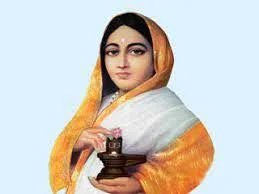
Cultural Patronage and Industrialization:
-
- Ahilyabai welcomed distinguished personalities such as Marathi poet Moropant, Shahir Ananta Gandhi, and Sanskrit scholar Khushali Ram to her capital.
- She propagated the message of dharma and played a pivotal role in industrialization, notably establishing a textile industry in Maheshwar, renowned for its Maheshwari sarees.
Military Leadership and Justice Administration:
-
- Exhibiting military prowess, Ahilyabai personally led armies into battle and appointed Tukojirao Holkar as the Chief of Army.
- Her reputation for administering justice impartially was exemplified when she sentenced her only son, convicted of a capital offense, to death by being crushed by an elephant.
Religious Contributions and Social Reforms:
-
- Ahilyabai’s legacy as a temple builder and philanthropist is profound, with hundreds of temples and Dharmashalas constructed under her patronage throughout India.
- Notably, she initiated the renovation of the iconic Kashi Vishwanath Temple in 1780.
- Furthermore, she implemented landmark decisions, including the abolition of traditional laws confiscating property from childless widows.
Legacy and Posthumous Recognition:
-
- John Keay, the British historian, bestowed upon her the title of ‘The Philosopher Queen’.
- Ahilyabai passed away on August 13, 1795, at the age of seventy, and her throne was succeeded by her nephew and commander-in-chief, Tukojirao Holkar.
Read also: A List of Major Freedom Fighters of India (1857-1947)
UPSC GS 2
Exit Polls
News:
- Ahead of the Lok Sabha poll results on June 4, there is significant excitement surrounding exit polls, which attempt to accurately predict the outcome.
Definition:
- Exit polls are surveys conducted immediately after voters leave polling stations.
Purpose:
- Exit polls provide an early indication of the likely outcome of the elections based on voter responses.
Methodology:
- Pollsters ask voters whom they voted for as they exit polling stations.
Sampling:
- A representative sample of voters from various polling stations is selected to participate in the survey.
Timing:
- Conducted on the day of the election after voters have cast their votes.
Publication:
- Exit poll results are usually published immediately after polling concludes.
Legal Restrictions:
- In India, the Election Commission bans the publication of exit polls during the voting period to avoid influencing voters.
Exit Poll Norms in India: Prohibition of Exit Polls
-
- Section 126 of Representation of the People Act, 1951: It prohibits conducting exit polls and disseminating results via print or electronic media from the start of the first phase until half an hour after the last phase ends.
- Article 324: Under Article 324, the Election Commission of India (ECI) prohibits media agencies from publishing or releasing the results of exit polls.
- Prohibition Period: The ECI usually imposes a “prohibition period” on publishing or disseminating exit poll results.
- Punishment for Violators: Violators of the directive could face a two-year prison term, a fine, or both.
- Registration Requirement: ECI also mandates that media agencies conducting exit polls register with the ECI.
Anti-incumbency
News:
- Strong anti-incumbency coupled with a united fight by the opposition parties routed the ruling YSR Congress party in Andhra Pradesh.
Incumbency:
- It refers to the period during which an official holds office.
Anti-incumbency:
- It is the feeling among voters against a political party and its elected representatives in power.
Features:
-
- Periods of anti-incumbent sentiment are typically characterised by wave elections.
- Anti-incumbency sentiment can also lead to support for term limits.
- A “wave election” is a term used to describe a significant electoral shift in which one political party makes substantial gains in seats in a legislative body, often resulting in a change of leadership.
- In a two-party system, anti-incumbent voters have only one party to vote for, when voting against the incumbent.
- In a multi-party system, public mood, i.e., the tendency of opinions held by voters over a set of related policy issues, can determine which parties receive the anti-incumbent vote.
Example:
- In India, the 1999-2003 phase saw the strongest anti-incumbency phase, with most state governments getting voted out.
Rule Of Stare Decisis
News:
- The Supreme Court recently held that the extraordinary powers under Article 142 of the Constitution of India are an exception to Rule Of Stare Decisis.
Meaning:
- “Stare Decisis” is Latin for “to stand by things decided.”
Mandate:
- This doctrine mandates that courts follow the rulings made in earlier similar cases.
Importance of Precedents:
-
- Guiding Principles: Past decisions serve as precedents, which are principles or rules that guide judicial decisions in future similar cases.
- Consistency: Ensures that similar cases are decided in a consistent manner.
Role of Precedents:
-
- Judicial Reference: Judges use precedents as references for making decisions in current cases with similar legal questions.
- Predictability: Helps in predicting the outcomes of similar legal cases based on established rulings.
Obligation of Courts:
-
- Consideration: Courts are obligated to consider these precedents in their rulings.
- Legal Consistency: Maintains consistency and predictability in the law by adhering to established rulings.
Legal System Efficiency:
-
- Operational Efficiency: These doctrines collectively ensure that the legal system operates efficiently.
- Hierarchy Maintenance: Maintains consistency and hierarchy in judicial decisions, supporting a stable legal framework.
See more: Green Technologies: Meaning, Types, Opportunities and Challenges | UPSC
UPSC GS 3
Diadromous Fish
News:
- A recent study has raised concerns about the effectiveness of Marine Protected Areas (MPAs) in safeguarding the habitats of rare migratory fish species.
Definition:
- Diadromous fish are species that migrate between saltwater and freshwater environments.
Lifecycle Movement:
- They move back and forth between the ocean and rivers or streams during different stages of their lives.
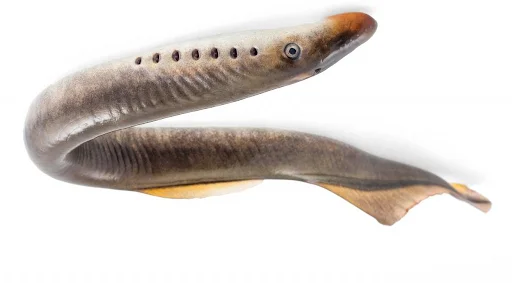
Types of Diadromous Fish:
-
- Anadromous Fish: Born in freshwater, migrate to the ocean as juveniles to grow into adults, and return to freshwater to spawn.
- Examples: Salmon, shad.
- Catadromous Fish: Born in saltwater, move into freshwater as juveniles to mature into adults, and migrate back to the ocean to spawn.
- Examples: Eels.
- Amphidromous Fish: Born in freshwater or estuaries, drift into the ocean as larvae, and later return to freshwater to grow into adults and spawn.
- Examples: Some species of gobies and snappers.
- Potamodromous Fish: Born in upstream freshwater habitats, migrate downstream within freshwater as juveniles to grow into adults, and migrate back upstream to spawn.
- Examples: Some species of trout and cyprinids.
Threats to Diadromous Fish:
-
- Agricultural and Pollutant Runoffs: Contaminants from agriculture and other sources can harm their habitats.
- Habitat Destruction: Dam construction and land development impact their migration routes.
- Barriers to Migration: Dams, weirs, and other structures hinder their movement.
- Fishing and Bycatch: Overfishing and accidental capture affect their populations.
- Climate Change: Altered water temperatures and habitats impact their survival.
Spot Bellied Eagle Owl
News:
- Pench Tiger Reserve (PTR), Maharashtra is a good breeding ground for a little-known population of forest eagle owl (Bubo Nipalensis), also known as the spot-bellied eagle owl.
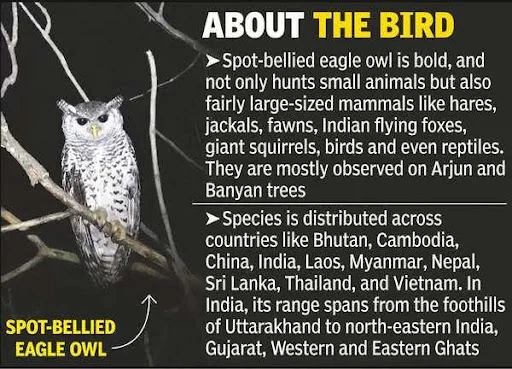
Spot-Bellied Eagle-Owl (Ketupa nipalensis):
-
- The spot-bellied eagle-owl, also known as the forest eagle-owl, is a large bird of prey with a formidable appearance.
- Scientific Name: Ketupa nipalensis
Distribution:
-
- Habitat: This species inhabits a variety of environments, including tropical and subtropical forests, woodlands, and savannas.
- Geographical Range: It is primarily found in India, Sri Lanka, Nepal, Bhutan, Bangladesh, and Southeast Asia.
Physical Features:
-
- Size: The owl measures about 50 to 65 cm in length and weighs between 1500 to 1700 grams. Its wingspan can reach up to 1.7 meters.
- Coloration: The upperparts of the owl’s body are a rich chocolate brown, speckled with white spots. The belly and breast are light cream-colored, covered in bold black spots, giving the owl its name.
Behavior and Ecology:
-
- Activity: Primarily nocturnal.
- Diet: As an apex predator, it feeds on a variety of prey, including rodents, small mammals, reptiles, and insects.
- Social Structure: It is a solitary bird that is territorial and maintains a home range.
Conservation Status:
-
- IUCN Status: Least Concern
- Wildlife (Protection) Act, 1972: Schedule IV
- CITES: Appendix II
Pench Tiger Reserve (PTR):
-
- Definition: It is an interstate tiger reserve spanning across Madhya Pradesh and Maharashtra.
- Madhya Pradesh Portion: Located in the Satpura ranges.
- Naming: The reserve is named after the Pench river that flows through it.
- Components: The reserve comprises the Indira Priyadarshini Pench National Park, the Pench Mowgli Sanctuary and a buffer.
- Important Bird Areas (IBA):The Pench Tiger reserve is also among the sites notified as Important Bird Areas (IBA) of India.
- Flora: Southern dry broadleaf teak forests, tropical mixed deciduous forests, shrubs, climbers , bamboo plantations.
- Fauna: Mammals such as sloth bear, jackal, nilgai, wild dog etc. Birds like peafowl, magpie robin, pintail, drongo, unia, myna etc.
- Note: Recently, the Pench Tiger Reserve (PTR) in Maharashtra has been marked as India’s first international Dark Sky Park.
Sunkoshi River
News:
- River Sunkoshi cleanup in Nepal has removed 24,575 kg of plastic in 36 hours.
Definition:
- Sunkoshi River is known as the “river of gold,”.
Location:
- The Sunkoshi is located in Nepal and it is part of the Koshi or Saptkoshi River system.
Feature:
- One of the longest and most rafted rivers in Nepal.
Course:
-
- Origin: The Sunkoshi originates from the Zhangzangbo Glacier in Tibet.
- Confluence: It merges with the Saptkoshi River.
- Flow Path: It eventually joins the Ganga (Ganges) in the Katihar district of Bihar, India.
- Drainage: Drains into the Bay of Bengal in Bangladesh.
Koshi River:
-
- Transboundary River: It flows through China, Nepal, and India.
- Tributary of the Ganges: It serves as a prominent tributary of the Ganges.
- Nickname: Known as “the sorrow of Bihar” due to its history of flooding and frequent course changes as it flows from Nepal to Bihar.
- Origin: Originates from the Tibetan Plateau and crosses the Himalayas.
- Flow Path: Flows through the Mahabharat range and Siwalik hills, reaching the plains of eastern Nepal and finally meeting the Ganges in Bihar, India.
- Drainage Area: Drains an area of 74,500 sq.km, with only 11,070 sq.km lying within Indian Territory. The Koshi River system drains about 45% of Nepal.
- Boundaries: The Koshi River valley is bounded by steep margins, disconnecting it from other rivers such as the Yarlung Zangbo River, Mahananda River, Gandaki, and Ganga.
- Course Changes: Known for its tendency to change course, often flowing westward. Over the last 200 years, Kosi has shifted westwards by approximately 112 km, causing significant changes to agricultural land.
- Tributaries: The Koshi River has seven major tributaries:
- Sun Koshi
- Tama Koshi (or Tamba Koshi)
- Dudh Koshi
- Indravati
- Likhu
- Arun
- Tamore (or Tamar)
Reading between the Lines: The Hindu 4 June 2024: What you should not miss!
Direct Seeded Rice (DSR)
News:
- The Indian Council of Agricultural Research (ICAR) has commercialized herbicide-tolerant (Ht) basmati rice varieties, which promotes water-saving direct seeded rice (DSR).
Definition:
- Direct seeding is a crop establishment system wherein rice seeds are sown directly into the field, as opposed to the traditional method of growing seedlings in a nursery, then transplanting into flooded fields.
Benefits:
-
- Faster Planting and Maturing: DSR delivers faster planting and maturing compared to conventional puddled transplanted rice (PTR) methods.
- Resource Conservation: DSR conserves scarce resources like water and labor, making it more sustainable.
- Cost-Effectiveness: DSR is economically viable as it reduces the need for labor and water resources.
- Conducive to Mechanization: DSR is more conducive to mechanization, reducing labor requirements and costs.
- Reduced Greenhouse Gas Emissions: DSR reduces emissions of greenhouse gases that contribute to climate change.
- Sustainable Agriculture: It promotes sustainable agricultural practices by minimizing resource use and environmental impact.
- Employment Opportunities: Mechanized DSR creates avenues for employment through new service provisions.
- Attractive to Youth and Women Farmers: DSR is less labor-intensive and free from drudgery, making it more attractive to youth and women farmers.
Herbicide-Tolerant Basmati Rice:
-
- Non-GM Varieties: ICAR has commercialized non-genetically modified (non-GM) Ht basmati rice: Pusa Basmati 1979 and Pusa Basmati 1985.
-
- Pusa Basmati 1979 and 1985 were made after cross breeding existing popular varieties —Pusa 1509 and Pusa 1121 with ‘Robin’ derived from a doubt-tolerant rice variety.
-
- Herbicide Application: Both the varieties contain a mutated acetolactate synthase (ALS) gene helping farmers to spray Imazethapyr, a broad-spectrum herbicide, to control weeds.
- Non-GM Varieties: ICAR has commercialized non-genetically modified (non-GM) Ht basmati rice: Pusa Basmati 1979 and Pusa Basmati 1985.
Stromatolites
News:
- Living stromatolites, ancient algae-made structures, were found on Sheybarah Island in the Red Sea off Saudi Arabia’s northeastern coast.
Stromatolites:
- Greek for ‘layered rock’, these are microbial reefs created by cyanobacteria (formerly known as blue-green algae).
Formation Mechanism:
- Stromatolites form through the entrapment and cementation of sediment particles by cyanobacterial biofilms, resulting in the accumulation of successive layers over time.
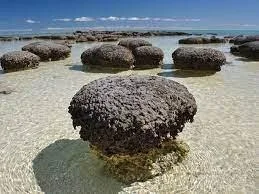
Morphological Characteristics:
- They typically display alternating light and dark layers and exhibit various shapes such as flat, hummocky, or domed structures.
Geological Timeline:
- Stromatolites were prevalent during the Precambrian era, exceeding 542 million years in antiquity, and persisted through the Proterozoic epoch, which dates back over 2.5 billion years.
Habitat Diversity:
- While predominantly found in marine environments, stromatolites have also adapted to intertidal zones and freshwater habitats.
Contemporary Distribution:
- Their existence today is limited to select saline lagoons and bays worldwide, with Western Australia, particularly Shark Bay, being significant locations.
Paleontological Significance:
- Stromatolites serve as invaluable repositories of ancient biotic records, with fossilized remains dating back more than 3.5 billion years, providing insight into Earth’s evolutionary history.
Importance:
-
- Contribution to Atmospheric Evolution: Stromatolites played a crucial role in the Great Oxygenation Event over 2 billion years ago by producing oxygen through cyanobacterial photosynthesis, shifting Earth’s atmosphere from carbon dioxide-rich to oxygen-rich.
- Atmospheric Transition: This change facilitated the evolution of eukaryotic cells, marked by the presence of nuclei, representing a pivotal step in life’s development on Earth.
Cyanobacteria:
-
- They, also known as blue-green algae, are microscopic organisms naturally found in various water bodies.
- They exist in freshwater, brackish (combined salt and freshwater), and marine environments.
- They are prokaryotic, meaning they lack a membrane-bound nucleus, which is a fundamental feature of a prokaryote.
- Cyanobacteria are Photoautotrophs i.e. they utilize sunlight to produce their own food through photosynthesis.
- In warm and nutrient-rich conditions, particularly high in phosphorus and nitrogen, cyanobacteria can undergo rapid multiplication.
- This proliferation leads to the formation of blooms, spreading across the surface of the water.
- Cyanobacteria are characterized by the presence of pigments that account for their color. In fact, they got their name ‘Cyanobacteria’ from their color, cyan (which is greenish blue).
Preston Curve
News:
- The term Preston Curve was recently in the news.
Definition:
- The Preston curve refers to a certain empirical relationship that is witnessed between life expectancy and per capita income in a country.
Origin:
- It was first proposed by American sociologist Samuel H. Preston in his 1975 paper “The changing relation between mortality and level of economic development”.
Key Findings:
- Preston found that people living in richer countries generally had longer life spans when compared with people living in poorer countries.
- This is likely because people in wealthier countries have better access to healthcare, are better educated, live in cleaner surroundings, enjoy better nutrition, etc.
Initial Growth and Impact:
- When a poor country begins to grow, its per capita income rises and causes a significant increase in life expectancy initially as people are able to consume more than just subsistence calories, enjoy better healthcare, etc.
- Example: India
- For example, the average per capita income of Indians rose from around ₹9,000 per year in 1947 to around ₹55,000 per year in 2011.
- During the same period, the average life expectancy of Indians rose from a mere 32 years to over 66 years.
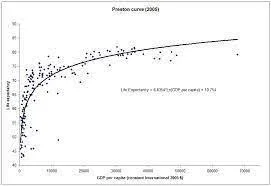
Diminishing Returns:
- However, the positive relationship between per capita income and life expectancy begins to flatten out after a certain point.
- An increase in the per capita income of a country does not cause much of a rise in the life expectancy of its population beyond a point as human life span cannot be increased indefinitely.
Exchange-traded funds (ETFs)
News:
- The total investment by the Employees’ Provident Fund Organisation (EPFO) in exchange-traded funds (ETFs) has exceeded Rs 2.5 trillion in 7 years.
Exchange-traded funds (ETFs):
- An ETF, or exchange traded fund, is a marketable security that tracks an index, a commodity, bonds, or a basket of assets like an index fund.
- Unlike regular mutual funds, an ETF trades like a common stock on a stock exchange.
- The traded price of an ETF changes throughout the day like any other stock, as it is bought and sold on the stock exchange.
- The trading value of an ETF is based on the net asset value of the underlying stocks that an ETF represents.
- ETFs typically have higher daily liquidity and lower fees than mutual fund schemes, making them an attractive alternative for individual investors.
- ETFs are considered to be more tax efficient compared to other mutual fund schemes.
- There are mainly five types of ETFs – equity ETF, bonds ETF, commodity ETF, international ETF and sectoral/thematic ETF.
Benefits of ETFs:
- Diversification: ETFs offer instant exposure to a diversified set of underlying assets, mitigating portfolio risk by spreading investments across various sectors and industries.
- Cost Efficiency: ETFs typically have lower expense ratios than actively managed mutual funds, resulting in enhanced long-term returns for investors due to passive tracking of an index.
- Transparency: Most ETFs disclose their holdings daily, providing complete transparency and empowering investors to align their investments with their objectives and risk tolerance.
- Liquidity: ETFs are actively traded on stock exchanges throughout the day, allowing for convenient buying and selling at prevailing market prices, offering increased flexibility compared to mutual funds.
- Tax Efficiency: ETFs often present tax benefits due to their in-kind creation and redemption process, potentially reducing capital gains distributions and optimizing returns.
- Accessibility: A diverse array of ETFs spanning various asset classes, sectors, and themes allows for customization of portfolios according to specific investment objectives and risk preferences, making ETFs accessible to a broad spectrum of investors.
- Minimal Investment: Many ETFs have modest minimum investment requirements, enabling accessibility for investors with smaller capital bases, facilitating gradual portfolio construction and market engagement even with limited funds.
Limitations of ETFs:
- Reduced Potential for Returns: ETFs may not outperform the market significantly over the long term due to their passive tracking of an index, potentially limiting potential returns compared to actively managed funds.
- Short-Term Price Fluctuations: ETF values can fluctuate throughout the day in response to market shifts, leading to increased short-term volatility compared to more stable investments.
- Tracking Discrepancy: Some ETFs may not precisely mirror their underlying index, resulting in slight variances in performance, which could affect overall returns.
